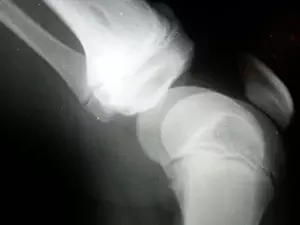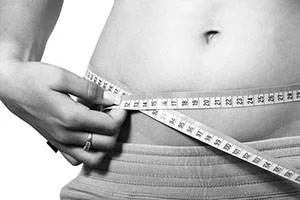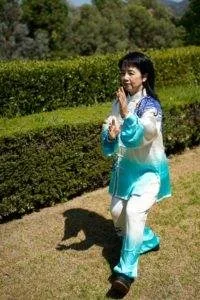By Qineng Tan, L.Ac., Ph.D. & Xiaomei Cai, L.Ac., Ph.D.

Why am I so stiff when I wake up in the morning? Why do my knees hurt when I stand up? Pain in the hands and fingers, pain in the feet and toes. Lower back pain that comes and goes but seems to be getting steadily worse? Any or all of these aches and pains could signal that you have arthritis. TCM and acupuncture can not only help relieve the pain and inflammation of arthritis, but it can help you regain and maintain your freedom of movement.
Arthritis is a general term for swelling and pain in the joints. Arthritis is very common, affecting over 50 million people of all ages, and is the leading cause of disability in America. Most people with arthritis take pain medications and go on with their lives, living with discomfort and increasingly limited range of motion.
The term “arthritis” refers to a wide variety of disorders that cause pain in the joints. A “joint” is any place in the body where two or more bones meet and allow for movement. Also called “articulations,” joints are formed by fibrous connective tissues that hold the bones together, and pieces of cartilage that provide cushioning and “slip” between the bones. Chronic, long-term arthritis can cause permanent physical changes in the structure of joints, leading to knobby knuckle joints, for example. Some types of arthritis affect other organs in addition to the joints.
Conventional treatment for arthritis mainly focuses on alleviating pain with analgesics or NSAIDS, and reducing inflammation with injectable medications. In some cases, though, these medications aren’t enough to control pain or to bring back people’s former mobility. Many of these medications also come with unwanted side effects.
Acupuncture can not only help with arthritis pain and stiffness, but TCM methods can help keep the joint tissues strong and healthy, reduce inflammation, and prevent further damage due to osteoarthritis. Autoimmune disorders that are unexplained by modern medical science, including rheumatoid arthritis, have been successfully managed by acupuncture and herbs for centuries. Integrative care that uses TCM modalities can help people manage their weight and lifestyle to prevent arthritis from causing limitations or disability.
What Causes Arthritis?
Arthritic pain in the joints can be caused by many different factors. The most common contributor to osteoarthritis is normal wear and tear on the joints over many years that reduces the amount of cartilage between the bones in key areas. Injuries can also cause damage to cartilage. Autoimmune disorders like rheumatoid arthritis or lupus can cause the body’s own immune system to attack the synovium, the tissues that produce synovial fluid, which provides lubrication to the joints. The medical community has not discovered the exact cause of rheumatoid arthritis (nor of most autoimmune disorders), but it is possible they are at least partially genetic in origin. The body’s immune response to certain bacterial and viral infections can also cause swelling in the joints; this is called reactive arthritis. Being overweight also contributes to the development of arthritis, as extra weight puts more strain on the joints.
Top 10 Types of Arthritis

Arthritis is a general term that refers to pain in the joints. There are over 100 different kinds of arthritis. The most common types of arthritis include:
- Osteoarthritis – also called degenerative arthritis, this is when the cartilage between the bones wears away, reducing cushioning and shock absorption to the point that the bones begin to rub against each other.
- Rheumatoid Arthritis – an autoimmune disorder in which antibodies attack the tissue lining around joints, causing inflammation and chemical reactions that, over time, damage all of the surrounding tissues: bones, cartilage, tendons, and ligaments.
- Psoriatic Arthritis – a type of inflammatory arthritis that occurs in about 30% of people who have psoriasis of the skin. Psoriasis causes skin cells to reproduce excessively, creating scaly red and white patches, often on the elbows and knees. In some cases, people will also develop pain, swelling, and stiffness in these joints, or in the fingers or toes.
- Ankylosing Spondylitis – this is an inflammatory disease which often first shows up during young adulthood. It causes the gradual fusing of the vertebrae; a person starts by feeling stiffness and pain in the back, and over time the posture becomes more hunched over as flexibility is reduced. Over time, new bone tissue forms, causing sections of the vertebrae to grow together, usually near the base of the spine, greatly reducing mobility.
- Gout – gout is a form of metabolic arthritis, in which a build-up of excess uric acid forms sharp crystals in the joints of the foot, causing painful swelling, often especially in the big toe.
- Infectious Arthritis – Swelling in the joints can be caused by the invasion of bacteria or a virus. Bacteria that cause food poisoning like salmonella, or STDs like chlamydia, or blood infections like Hepatitis C, can create inflammation that affects joints.
- Reactive Arthritis – previously called “Reiter’s syndrome,” reactive arthritis is an acute form of infectious arthritis caused by bacterial infection, most often affecting the knees and ankles, and accompanied by other symptoms like inflammation in the eyes, and skin rashes. It can be caused by a chlamydia infection or bacterial infection in the digestive tract, and usually only lasts a short time. However, people with immune diseases, like HIV, can develop more chronic forms of reactive arthritis.
- Systemic Lupus Erythematosus (SLE) – Lupus is an autoimmune disease that can cause swelling in the connective tissues of the joints, as well as other symptoms, including: fatigue, rashes on the face, swollen lymph nodes, fever, hair loss, and extreme sensitivity to light and other stimuli.
- Fibromyalgia – a syndrome in which the brain amplifies the perception of pain in the joints and muscles. People with rheumatoid arthritis, lupus, or ankylosing spondylitis may also have fibromyalgia.
- Childhood Arthritis or Juvenile Arthritis – a broad term that simply refers to arthritis when it is experienced by a child. Children usually have either an autoimmune type of arthritis or a reactive arthritis triggered by a bacterial or viral infection.
Top 5 Arthritis Symptoms

Perhaps because a majority of people over the age of 50 feel some symptoms of arthritis, we often think of stiffness and pain in the joints (hip pain, shoulder pain) simply as a normal part of aging. It is true that over time, the wearing down of cartilage and bone tissue is practically inevitable. Still, it is important to pay close attention to potential symptoms of arthritis, and take steps to prevent them from worsening. The top 5 signs of arthritis include:
- Pain in joints – may be a constant, nagging pain, or it may come and go
- Stiffness – especially feeling stiff when you get up in the morning
- Swelling in joints – sometimes with redness in the skin around the joint
- Reduced range of motion – difficulty getting up when you’ve been sitting or lying down
- Fatigue – actually, fatigue may be the first sign that someone has rheumatoid arthritis, but this symptom often goes ignored
Recent research has linked rheumatoid arthritis (RA) with metabolic syndrome. People who have been diagnosed with RA are much more likely to also show signs of metabolic syndrome (MS). MS is clinically indicated when a person presents with three or more of these markers: insulin resistance, high blood pressure, obesity or high waist circumference, high cholesterol and/or triglycerides or raised fasting glucose levels. Osteoarthritis and MS also seem to be linked, especially in cases of osteoarthritis of the knee. It is not clear how precisely these various forms of arthritis may be related to MS, but it is clear that the combination of these health problems puts people at high risk for cardiovascular disease, diabetes, and stroke. The good news is that metabolic syndrome issues and rheumatoid arthritis can be improved with lifestyle management and acupuncture treatment.
Can Acupuncture Help Arthritis?
According to TCM theory, most cases of rheumatoid arthritis fall under the category of Bi Syndromes, which covers various conditions in which Qi (life force energy) and/or Blood are somehow blocked from moving freely through the meridian pathways of the body. Due to Qi and Blood deficiency, cold, dampness, wind, or heat are more likely to invade the system and cause Bi Syndrome to develop.
In TCM we also consider whether a problem stems from internal or external factors. In some cases, arthritis may be caused by an internal problem that was congenital–meaning, a person was born with it. Qi deficiency as an underlying condition might be an internal factor, which then kicks in when some external factor, such as cold from wind invasion, comes in and creates a blockage, and the Qi is too weak to combat it. Some people are simply more likely to be affected by these factors because of their innate condition. Most of the types of arthritis mentioned above are due to internal factors and inflammation. Only reactive arthritis is caused by external factors of infection. Also, if an injury occurs and does not heal properly, that can lead to arthritis in a joint. A few differentiations of Bi Syndrome that might cause arthritis include:
- Cold pattern – cold wind with dampness from an external source causes stiffness that improves with the application of heat, and is accompanied by reduced circulation and pale skin. This is why we advise against sitting or being out in cold, damp weather for long periods of time. This can cause cold stagnation to take hold in the joints.
- Moving Bi – pain is not fixed; it can move to different joints in different areas.
- Sore Bi – pain more dominant, feels better after applying heat, feels worse when it gets cold.
- Fixed Bi – the joint feels heavy, sore and swollen and the pain is in a definite spot, painful to the touch.
- Heat pattern – in this case, the joints are red, swollen, and inflamed, and the face is flushed.
A one-size-fits-all approach to care for people with arthritis simply does not work for everyone. The manifestation of inflammation in people with the cold type differs from that in people with the hot type. An acupuncture practitioner will treat a patient with arthritis based on their individual, specific presentation of symptoms. A systematic review showed how treating patients with RA with different therapies according to their TCM diagnosis produced better outcomes than the standard conventional treatments for RA.
A review of 43 clinical studies showed that TCM for RA not only helps reduce inflammation as a symptom, but improved immune system function. Better regulation of the immune system means that TCM methods help treat arthritis stemming of autoimmune disorders at their source, rather than simply managing pain.
Another review of ten clinical trials analyzed how effective TCM treatment was for people with osteoarthritis of the knee. Eight out of the ten trials concluded that acupuncture was an effective treatment for reducing pain due to osteoarthritis and should be considered as an adjunct or alternative to pharmacological treatments.
Acupuncture treatment combined with Chinese herb supplements and personalized diet coaching can help alleviate symptoms due to different types of arthritis, and may even be able to reverse and prevent further damage to the joints.
Top 5 Tips for Relief of Stiff Joints

While years of use will naturally cause some degradation of joint tissues, there are definitely things you can do to protect your joints and prevent arthritis from slowing you down.
- Weight Management – weighing too much puts extra stress on your joints. One pound of fat translates to four pounds of pressure on the bones and tendons. We don’t recommend trendy weight loss diets; instead, focus on eating lots of fresh vegetables and fruits, lean proteins, and complex carbohydrates from whole grains.
- Vary Your Exercise Routine – different types of physical activity provide different sorts of benefits for your joints. If an arthritis condition is acute, it is best to stick with gentle movements that rotate the joints. Cardiovascular exercise is important to strengthen the heart. Strength training, or toning the muscles (lifting weights) helps build strong bones and muscle mass to support your joints. Pay attention to rotating each joint to prevent stiffness or “frozen” joints on a daily basis: wrists, ankles, shoulders, hips, spine, etc. Tai Qi, Qi Gong, and yoga also challenge your balance; this is especially important as we age, to reduce the risk of falls and other accidents. And you can’t beat a nice, long walk for low impact, weight-bearing, aerobic exercise. Be sure to warm up and cool down with slower, gentle movements at the beginning and end of your workouts so as to avoid any shock to the joints and get your juices (synovial fluid and hyaluronic acid) flowing, literally. Meditation is also very important to maintain mental health. Chronic conditions like arthritis are affected by emotional imbalances that can be helped with meditation practice.
- Drink More Water – staying hydrated is so important for keeping the joints lubricated.
- Eat Healthy Fats – make sure to get adequate intake of good fats, like Omega-3 fatty acids, from fish or fish oil, nuts and seeds, good quality olive oil, and avocados. Overall an anti-inflammatory diet should be observed whenever there is swelling and pain in the joints, which includes avoiding nightshade vegetables, spicy foods, and sugar.
- Wear the Right Shoes and Warm Clothes – choose footwear that fits properly and is supportive. Flip-flops, high heels, and shoes that are too tight can put undue pressure on the joints and don’t provide adequate cushioning and shock absorption. People with Yang Qi deficient conditions should always keep the joints covered with clothing. Exposure can let the cold in.
Acupuncture Near Me for Arthritis
If you or someone you know is feeling the stiffness, swelling, and pain of arthritic joints, don’t wait until it gets worse to do something about it. Regular acupuncture treatment can reduce pain and inflammation. The doctors at Art of Wellness have over 30 years of experience helping patients find arthritis pain relief.
*This article is for education from the perspective of Traditional Chinese Medicine only. The education provided by this article is not approved by FDA to diagnose, prevent, treat and cure human diseases. It should not stop you from consulting with your physician for your medical conditions. Traditional Chinese Medicine is based on Qi, which is an invisible force that usually cannot be observed by modern science. Because science focuses on testing ideas about the natural world with evidence obtained through observation, these aspects of acupuncture can’t be studied by science. Therefore acupuncture and Chinese herbs are often not supported by double-blind, randomized trials, and they are considered alternative medicine therapies in the United States.
